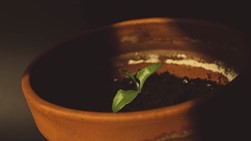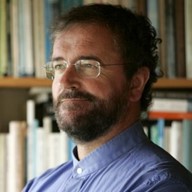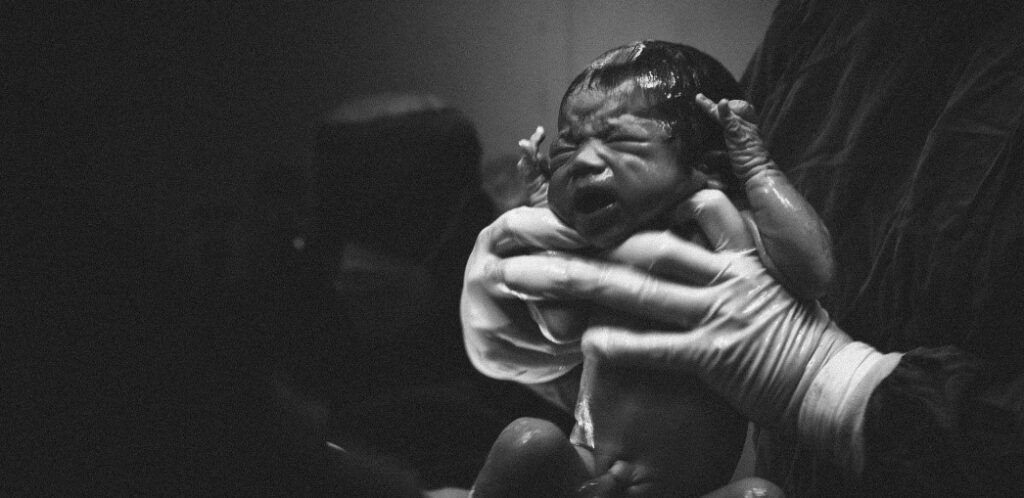By Allie Williams

I never expected seminary to lead me to birth work. I came to Candler School of Theology like many of my colleagues—answering a “call.” I didn’t know what for, only that this was where I needed to be next. Very quickly, I learned that church ministry was not my work. After serving as a children’s ministry director for a year and a half of the pandemic, this truth echoed more loudly than ever. However, I was still eating up everything I was learning in classes and felt for the first time in my life truly surrounded by the right community. But if not church ministry, what was I doing here?
In the dark chaos of the early months of COVID-19’s waves across the United States, a seed for new life (quite literally) was planted in me. I have long been interested in birth. It has always seemed to me a mesmerizing and powerful process. I don’t know what made me begin to research birth work more. Perhaps it was sitting around a campfire with tired pandemic moms and feeling filled to the brim by their conversation about motherhood (something I have yet to experience myself). All I know is that I began to research birth work during the pandemic, and I haven’t stopped since.
In the past two years, I have consumed book after book about pregnancy, childbirth, breast and chest feeding, postpartum mood disorders, and parenting. This new passion truly became my hopeful thing in quarantine. When the world has seemed to be crumbling, I have stood in awe of new babies born, fresh with endless possibilities for their lives.

Studying birth alongside theology has been a powerfully spiritual experience. My work has been guided by the thoughtful blessings of the late Celtic poet and philosopher, John O’Donohue. O’Donohue gave a lot of attention in his poetry to thresholds of life—those moments when we cross over from one identity into the next.
When I began to train to become a birth and postpartum doula in March of 2021, I realized that I had found my way into the work of transitions, thresholds, the liminal spaces between life and death. O’Donohue (and many birth workers) understand these as sacred spaces (1).
Ritual theorist Victor Turner also saw the importance of such moments. He argued that a ritual is a way to move through spaces of liminality (2). Much of my work at Candler has become shaped by ritual as I work to accompany families into a new world—the one in which their baby now exists as a whole human being. I have had the honor of researching and writing about sacred birth rituals across many traditions, finding that so many rites have been used throughout the centuries to reaffirm identity and mark the transition that is birth.
Did you know that in Igboland, there is a rite called Omugwo in which new mothers must stay inside for approximately 28 days after birth to properly heal and rest? (3) In Georgia, it is common for an indigenous family to tend a fire while the midwife assists a woman in labor. The fire is meant to keep evil spirits away from the laboring woman.
For the Cossacks, there is attention given to loosening objects such as belts, knots, and plaits in the laboring woman’s hair, to encourage her pelvis to open so that the baby may be delivered faster. In the case of a prolonged labor, the mother-in-law may gather all the pregnant women in the village. Barefoot with flowing hair and dresses, they together sing the Psatxa around a tree to gain favor of the “deity of the soul” who is thought to assist with the birth (4).
Birth has a lot to teach us about spirituality. Not only does it reveal our need for ritual throughout life, but it also demonstrates the need to be excessively gentle with ourselves through transitions. With birth always comes death, sometimes in the literal sense. Even when a healthy baby is born, there is death to the former identity of the individuals in the baby’s life as they grow into new roles as parents, siblings, and caretakers. As we emerge from this pandemic, even as we continue to grieve the losses we witness in the media and our own lives every day from war, racism, bigotry, and hatred, may we also witness that which is being birthed in us. And may we learn to ask for help (perhaps from a doula

(1) John O’Donohue, To Bless the Space between Us: A Book of Blessings (New York: Doubleday, 2008).
(2) Robert A. Segal, “Victor Turners Theory of Ritual,” Zygon 18, no. 3 (1983): pp. 327-335, https://doi.org/10.1111/j.1467-9744.1983.tb00518.x.
(3) Sylvia Bawa, “Paradoxes of (Dis)Empowerment in the Postcolony: Women, Culture and Social Capital in Ghana,” Third World Quarterly 37, no. 1 (February 2016): 119-35, https://doi.org/10.1080/01436597.2015.1086636.
(4) Mariet Djandar, “Rituals of Birth among the Adyghes,” Iran and the Caucasus 12, no. 2 (January 1, 2008): 258-60, https://doi.org/10.1163/157338408×406038.

ON THE BIRTHING PROCESS, in the pandemic context
“This threshold space for us is an important make-or-break space, to stay in the lifeless/waiting for death space/end times or rebirth/regeneration – a natural aspect of earth.
This is a most uneasy space that requires faith in the capacity for earth’s regeneration, for ours, too, in silence/deep work, and creativity.
Creative imagination that is, of the New Creation that is ours to claim.”
(Agnes Miclat Cacayan)